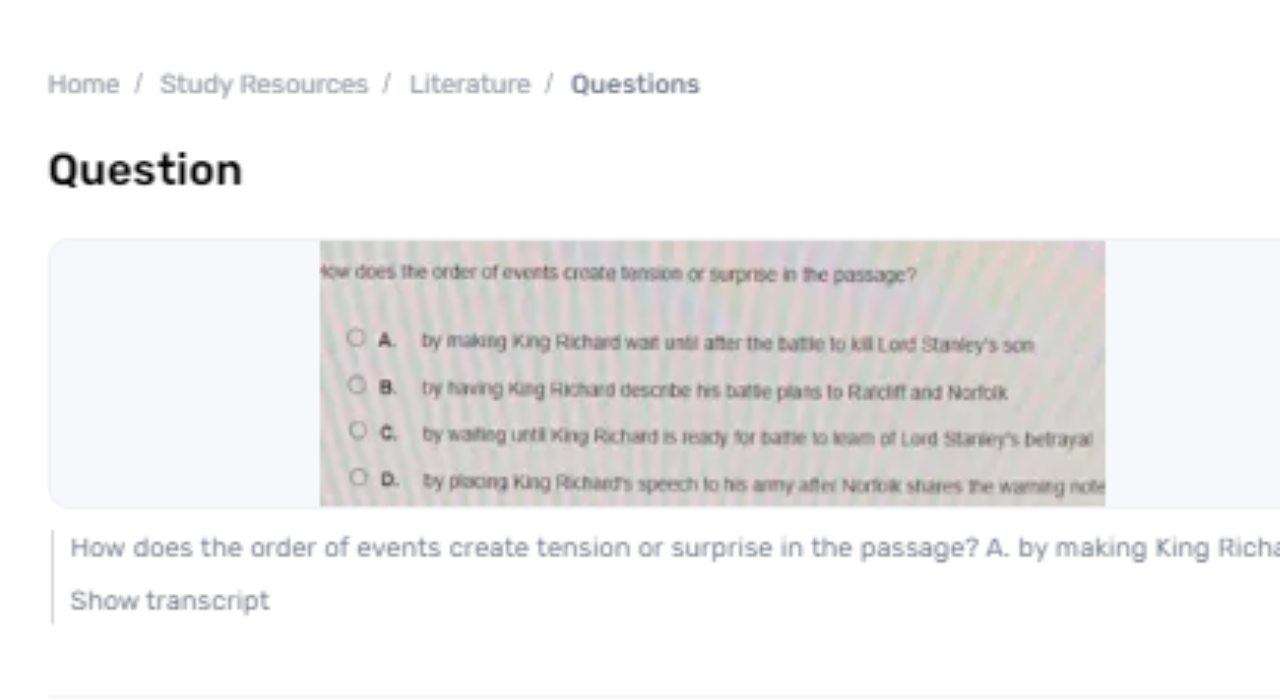The order of occasions in a story plays a basic part in forming the reader's involvement, especially in making pressure and astonish. By deliberately organizing occasions, creators control how data is uncovered, impacting the anticipation and enthusiastic effect of the story. This strategy can increase pressure, astonish perusers, and keep up engagement. Understanding how the grouping of occasions influences the reader's recognition can give important bits of knowledge into story structure and narrating procedures. This paper will investigate how does the order of events create tension or surprise in the passage? utilizing illustrations to demonstrate these impacts.
Successive Unfurling of Plot
The successive unfurling of plot occasions is crucial in making a compelling story. By setting occasions in a particular arrangement, creators control the stream of data and oversee how the peruser sees the story. For occasion, displaying a basic piece of data early on can set the organization up for later revelations, creating expectation and pressure. Then again, withholding key subtle elements until afterward within the story can construct tension and lead to unforeseen turns.
Building Pressure through Postponed Disclosures
One of the essential ways to create tension is through the key delay of disclosures. By delaying the divulgence of significant data, authors keep perusers on edge, and energetic to memorize more. For case, in a riddle novel, the genuine personality of the guilty party may be uncovered as it were towards the conclusion of the story, after an arrangement of deluding clues and ruddy herrings. This delay in uncovering the truth strengthens the need for users to reassess their suspicions and increases their engagement with the account.
Making Astonish with Unforeseen Turns
The arrangement of occasions moreover plays a pivotal part in conveying astonishment through startling turns. By modifying the normal movement of occasions or presenting sudden, unanticipated advancements, creators can sabotage readers' desires and make impactful minutes of shock. For occurrence, a plot turn where a dependable character is uncovered to be the opponent can be particularly jostling on the off chance that it happens after an arrangement of apparently conventional or unsurprising occasions.
The Part of Portending
Portending is another procedure closely related to the arrangement of events that can upgrade pressure and astonish. By unobtrusively indicating future advancements, creators can get ready perusers for critical plot focuses while keeping up a component of the riddle. Viable foretelling includes planting clues early within the story that as it were make sense when the consequent occasions unfurl. For illustration, a harmless detail specified early in a story might be pivotal to the plot's determination afterward.
Overseeing Pacing and Story Pressure
The order of occasions is additionally indispensable to overseeing the pacing of a story, which in turn influences pressure and shock. Creators can control the beat of the story by changing the speed at which occasions are uncovered. Quickly unfurling occasions can increase pressure by making a sense of direness, whereas slower disclosures can construct anticipation by permitting pressure to simmer. Balancing these components guarantees that the reader remains locked in and contributes to the story. By carefully coordinating the pacing, creators can keep up an energetic and compelling account that keeps perusers on their toes.
Approach for Replying to a Gauth Inquiry
1. Determine the Inquiry
Sort: Build up whether the address bargains with setup, utilize, administration, or investigating to center your reaction fittingly.
2. Acquire Pertinent Data:
Counsel official Gauth documentation and common issues to ensure your reply is comprehensive and precise.
3. Construct the Reaction:
Organize your reply in a coherent organize with clear, noteworthy steps that address the inquiry straightforwardly.
4. Verify and Refine:
Check the precision of your points of interest and alter the reaction for clarity and conciseness, ensuring it is straightforward to get a handle on.

Conclusion
In conclusion, the arrangement of occasions may be an effective instrument in the account of narrating that altogether impacts the creation of tension and shock. By deliberately orchestrating the arrangement of occasions, creators can construct anticipation, provide unforeseen turns, and oversee the pacing of the story. Methods such as deferring disclosures, foretelling, and shifting story speed all contribute to the viability of this approach. Understanding how the arrangement of occasions impacts the reader's encounter can improve one's appreciation of account structure and narrating. Eventually, the cautious control of occasion arrangement guarantees that the account remains locked in, candidly resounding, and full of shocks.

